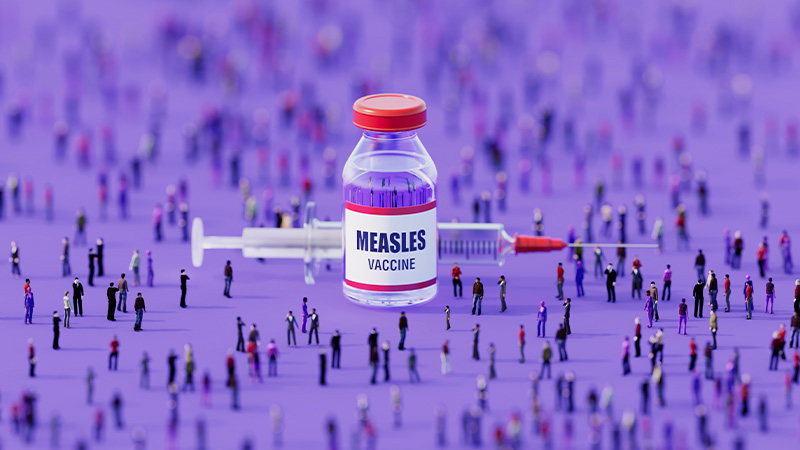Image Credit: The Sydney Morning Herald / Contributor / Getty
A case study on medical ethics revealed that when Merck conducted their Gardasil Human Papilloma Virus (HPV) clinical trials, they injected both the test and the placebo groups of girls and young women with a proprietary aluminum adjuvant which was extra potent, causing chronic disabling symptoms, despite the ‘informed consent’ information not mentioning the dangerous ingredient.
“The informed consent forms for Merck’s Gardasil vaccine trials appear to be seriously misleading, as a highly reactogenic adjuvant with a questionable safety record was described as an inactive placebo,” the case study said in the ‘Conclusion’ section.
An adjuvant is a vaccine ingredient that agitates the immune system into eliciting an immune response to the vaccination agent, in this case HPV.
“Merck used their proprietary amorphous aluminum hydroxyphosphate sulfate (AAHS) adjuvant as the “placebo”. The V501-018 trial however, did not use a saline placebo either, but rather the Gardasil vaccine’s carrier solution which includes L-histidine, polysorbate 80, sodium borate and residual yeast protein which is a potential allergen [7,8]. Moreover, only 1,781 children between 9 and 15 years of age were included in this trial; both male and female who were randomized in a 2:1 ratio to receive either Gardasil or the “placebo” [8]. By contrast, the largest pre-licensure Gardasil trial V501-015 (the FUTURE II trial), recruited 12,167 subjects, all females between 15 and 26 years of age, who were randomized in a 1:1 ratio to receive either Gardasil or the AAHS injection [9],” the case study said in section 1 of the ‘Background’ section.
The researchers said that four years after vaccination, the test subjects had “reduced HPV-related carcinoma in situ, external genital lesions, and HPV-related treatment procedures. However, the HPV vaccines increased serious nervous system disorders and general harms.” They went on to detail the specifics.

It turns out that these medical test subjects received an aluminum dose different than the dose that patients received when getting the shot after it was officially rolled out, raising questions about the legitimacy of the trial results for real-world vaccinations.
“We further note that contrary to the EMA’s statement cited above, “the control product” in Gardasil vaccine trials did not contain “the same amount of Al(OH)3 as the study vaccine”, because the adjuvant in Gardasil is AAHS, not Al(OH)3,” the case study said in section 6 of the ‘Background’ section.
Aluminum adjuvants were discovered in 1926 and Merck’s proprietary amorphous aluminum hydroxyphosphate sulfate (AAHS) has been used in licensed vaccines since 1987.
The researchers described the inflammatory harm that the aluminum adjuvant causes the body, interestingly the harm is worse when not paired with a vaccination agent, and that harm is positively correlated to the level of immune response (effectiveness) that is elicited by the vaccine.
“Interestingly, the pro-inflammatory and pro-necrotic effect of AAHS alone was greater [27],” the case study said in section 2 of the ‘Background’ section. “The above-cited research confirms that increased immunopotency inevitably comes at the cost of increased inflammation-driven reactogenicity and reduced safety [18,19,22,28]. Accordingly, it is acknowledged that, “in animal models of autoimmune disease induction, inflammation is essential to break tolerance to self-antigens” [28]. This means that potent inflammatory adjuvants have the necessary biochemical properties to induce chronic systemic immune-mediated diseases in susceptible individuals. It is thus of concern that in comparison to traditional aluminum adjuvants AAHS was shown by Merck to be the most potent inducer of antibody responses [15].”
Section 3 of the ‘Background’ section of the case study said that the pharmaceutical company claimed that they used the proprietary aluminum adjuvant in order to ensure ‘blinding’ of the trial, so as both the vaccine and placebo groups had only one thing different between them, the viral HPV agent.
However this would also cause the vaccination group to not exhibit any unusual side effects verses the placebo group (if those side effects resulted from the adjuvant). Moreover though, Merck has preformed other studies without dosing their placebo groups with aluminum.
While the aluminum adjuvant has been in use for nearly a century, its ‘safety characteristics’ are not well understood, unsupported and likely nonexistent.
“…after almost 100 years of use, the way in which aluminum adjuvants interact with the immune system remains obscure [11,54,67–69]. For this reason, in the contemporary scientific literature, aluminum adjuvants are still sometimes referred to as the immunologists’ “dirty little secret” [70],” the case study said in section 4 of the ‘Background’ section. “It is thus perplexing that the allowable amount of aluminum in human vaccines was selected exclusively on the basis of efficacy, not safety considerations [56], even though it is acknowledged that for prophylactic vaccines given to predominantly healthy individuals safety is to be prioritized over efficacy [72,73].”
“…the advertising material for the trial and the informed consent forms stated that the placebo was saline or an inactive substance, when, in fact, it contained Merck’s proprietary highly reactogenic aluminum adjuvant which does not appear to have been properly evaluated for safety. Several trial participants experienced chronic disabling symptoms, including some randomized to the adjuvant “placebo” group,” the case study said in the ‘Results’ section.





